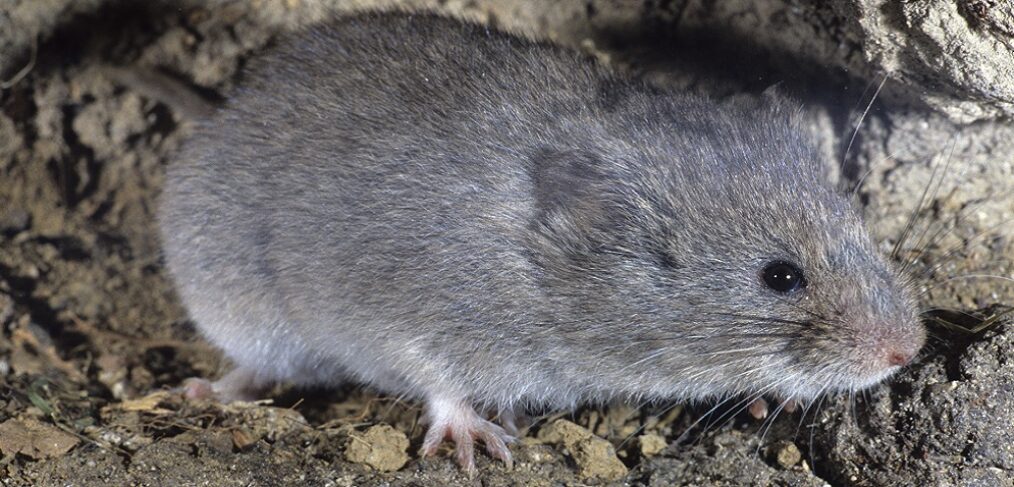
species of the week # 84 – snow vole
Mice are now hibernating? Not all mice! The cute snow vole is active in the mountain regions between 1000 and 4000 metres and does not hibernate. Instead, it likes to bask on sun-warmed rocks and build a burrow perfectly adapted to melting snow and rough rocks. Snow voles even make hay and store it in their nest for the winter. In this way, they ensure the spread of rare plant species, e.g. the rusty-leaved alpine rose. Because the snow mouse is essential for the survival of these plants, it is protected by the Bern Convention on the Protection of Wild Fauna and Flora, although it is not endangered itself.
| Distribution status in Germany | not endangered |
| Residual occurance | Alps, Pyrenees, Carpathians |
| Last sighting in Germany | current |
| Habitat | Rocky areas above the tree line |
| Threat | none |
The snow vole is a mammal of the vole subfamily. It mainly inhabits alpine mats and slopes. Its body is between 9 and 14 cm long, the tail measures an additional 5 to 8 cm. The dense soft fur is light grey on the back and sides with a brownish tinge, but whitish on the belly. To protect them from the cold, the feet, ears and tail are covered with white hair, the tail has a white end tassel. The whiskers are, also typical for the species, very long at over 3.5 cm.
At low temperatures, snow voles hide in their burrows, which are insulated by the snow. They keep the way to their nests free of stones and debris so that they do not trip or stumble when fleeing from predators. The entrance to the burrow, which is often next to stones, is protected from the water by a mound of earth when the snow suddenly melts. Snow voles should “hay” in autumn, i.e. let bitten-off plant parts dry in the sun before storing them. If the winter is even too severe, they sometimes venture close to humans and seek shelter from frost and ice in hay barns or mountain huts.
By observing a Swiss snow vole population, researchers at the University of Zurich have found out that snow voles adapt to climate change. The earlier the snow falls, the smaller the snow voles becomes. For about ten years, scientists from the University of Zurich studied a population of snow voles at an altitude of about 2,000 metres near Churwalden. There they witnessed how the snow voles genetically adapted to the earlier winter slumps within a few generations. The small, light young mice are then apparently better off: they reach their final size more quickly and are thus fully grown before the weather turns bad, the researchers suspect. They conclude that the importance of evolutionary adaptation in plants and animals with regard to man-made climate change has probably been underestimated so far.
Click here for many more exciting species of the week
Image: By Svíčková – Own work, CC BY-SA 3.0, https://commons.wikimedia.org/w/index.php?curid=11485886
